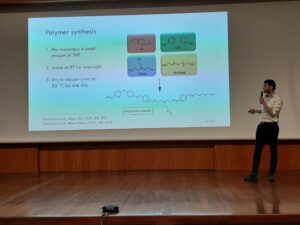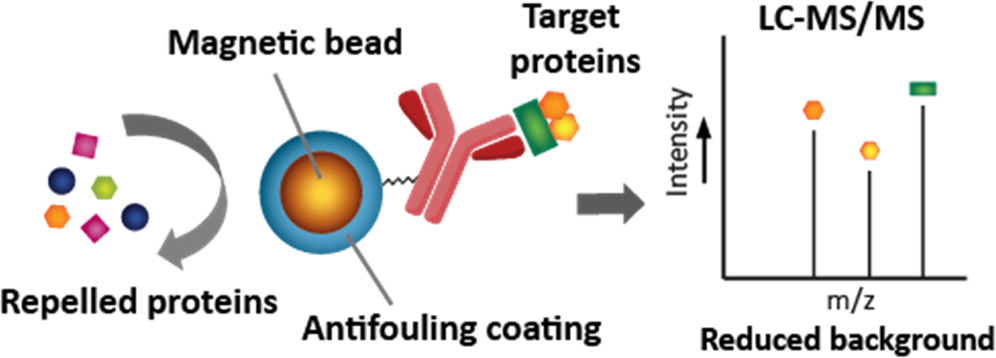The year has been off to a good start, with three papers being published on antifouling coatings. Andriy and Lucas jointly published two papers in Advanced Materials Interfaces, while Annemieke had a paper accepted in Applied Surface Science.
The Advanced Materials Interfaces paper (lead by Andriy) reports on random and diblock copolymer brushes with antifouling properties, prepared by surface-initiated photoinduced electron-transfer-reversible addition–fragmentation chain transfer (SI-PET-RAFT). These brushes are based on HPMA (superb antifouling) and CBMA (good antifouling and functionalisable via activated ester chemistry) and are therefore of interest for use as functional antifouling coatings in various biosensing application.
The second Advanced Materials Interfaces paper (lead by Lucas) reports on thermoresponsive poly(NMEP) brushes. In this research, the thermoresponsive and antifouling properties of poly(NMEP) polymer brushes are investigated and the possibility to incorporate poly(NMEP) in more complex polymer brush structures are demonstrated.
Finally, Annemieke’s Applied Surface Science paper presents a thorough study on the behaviour of various polymer brushes, with varying degree of fluorination, in damaging, healing and fouling conditions. This work is driven by the need to reduce the fluorine content of coatings in view of the environmental impact of (poly-)fluorinated compounds, without comprising their antifouling and self-healing performance.

